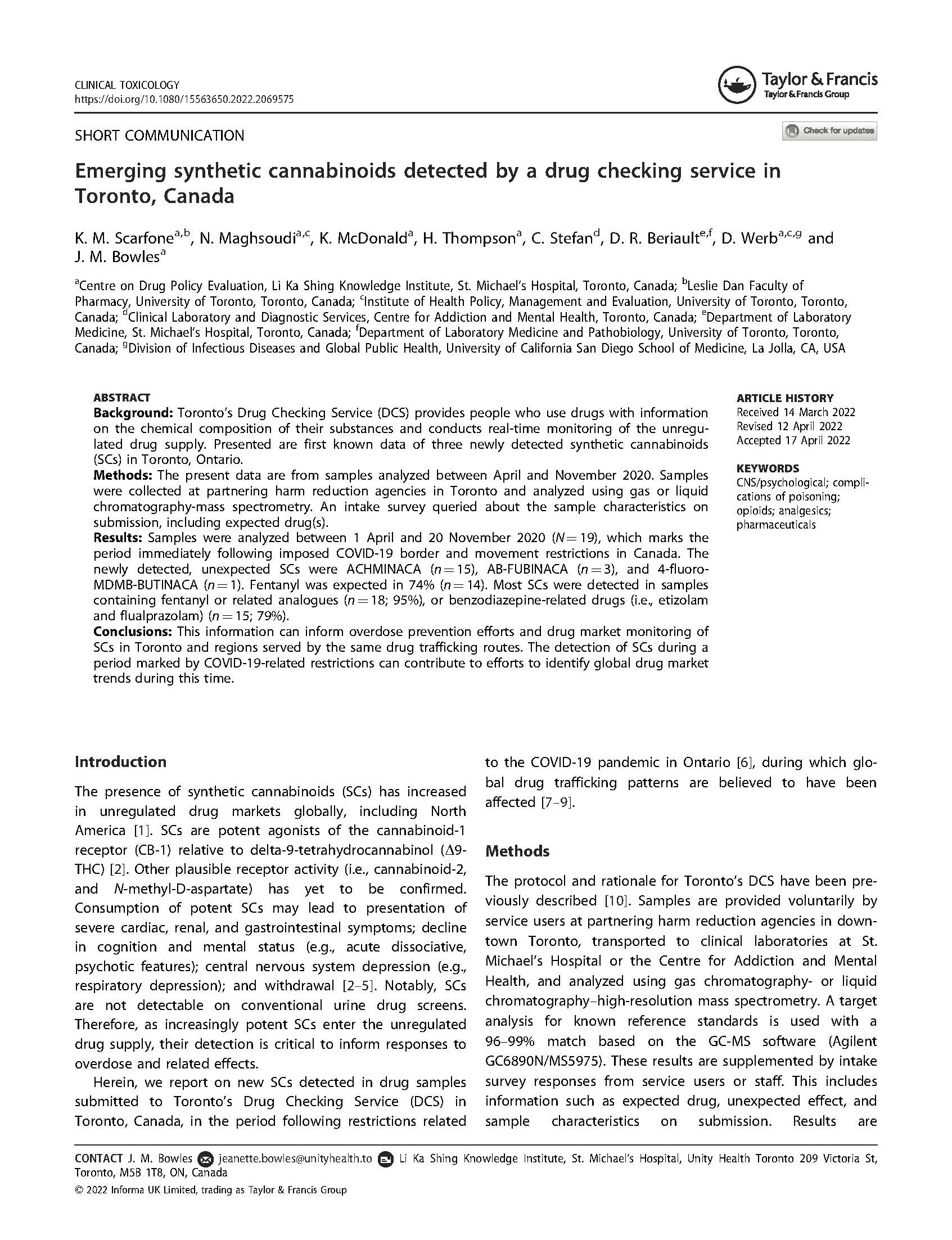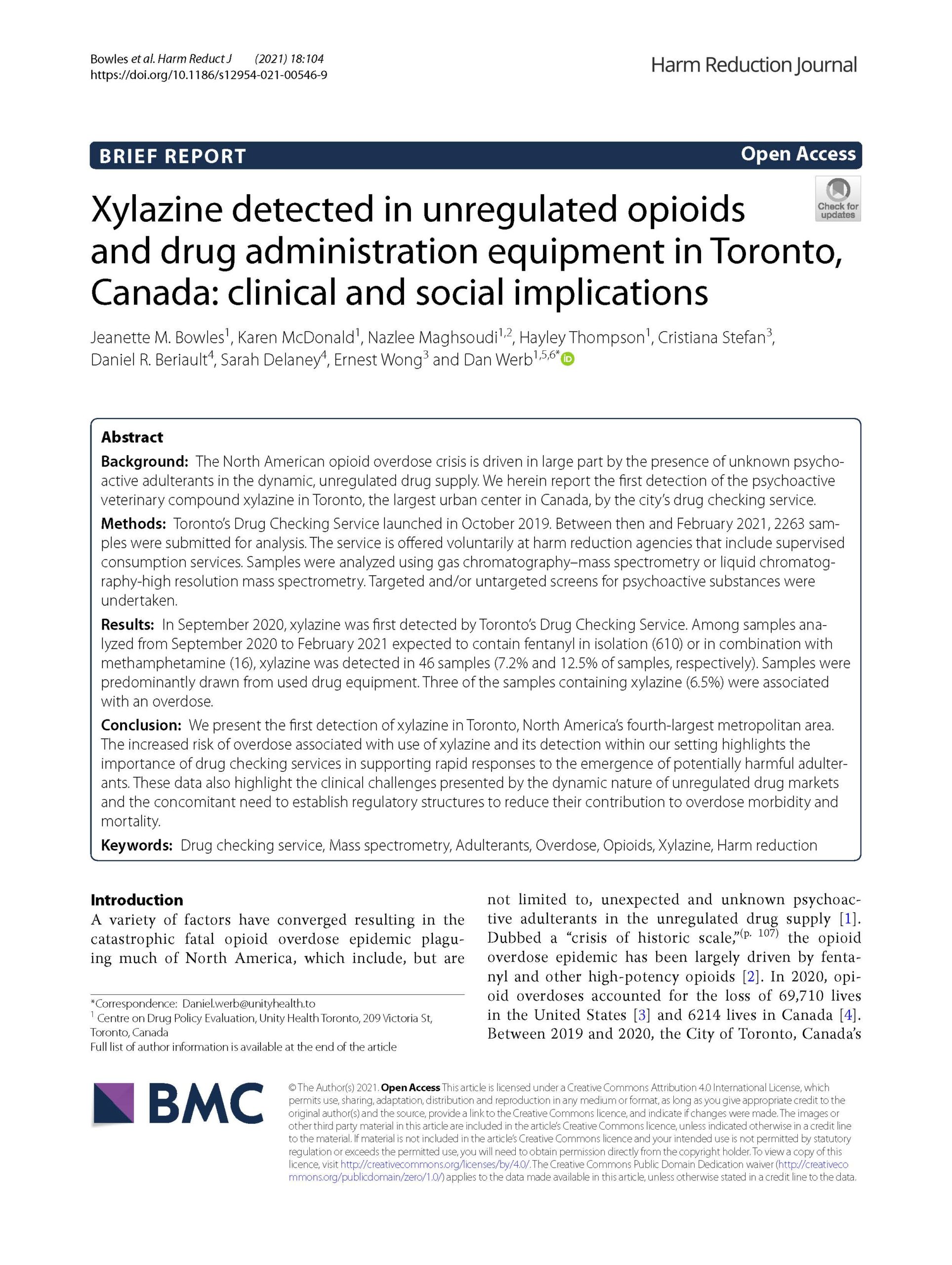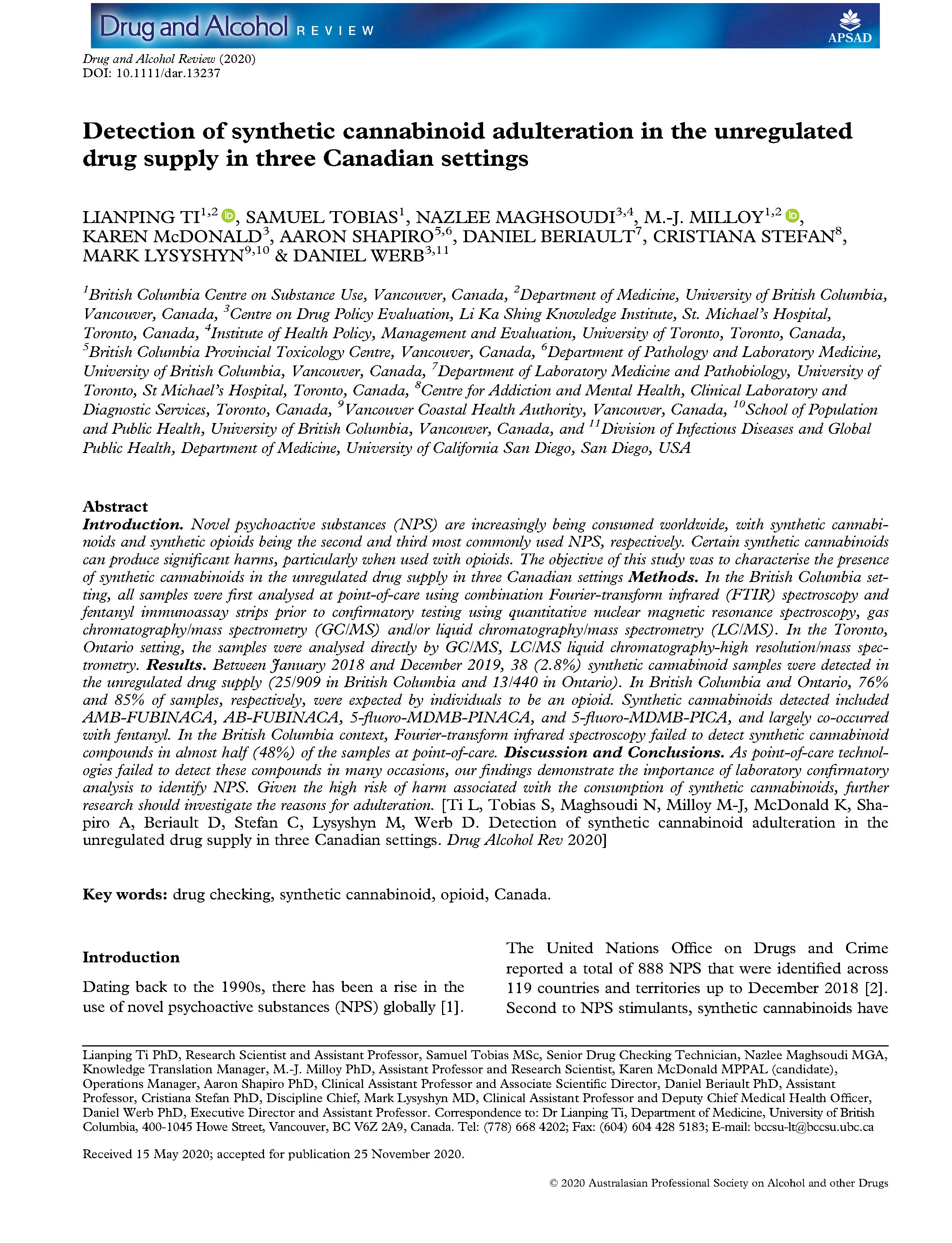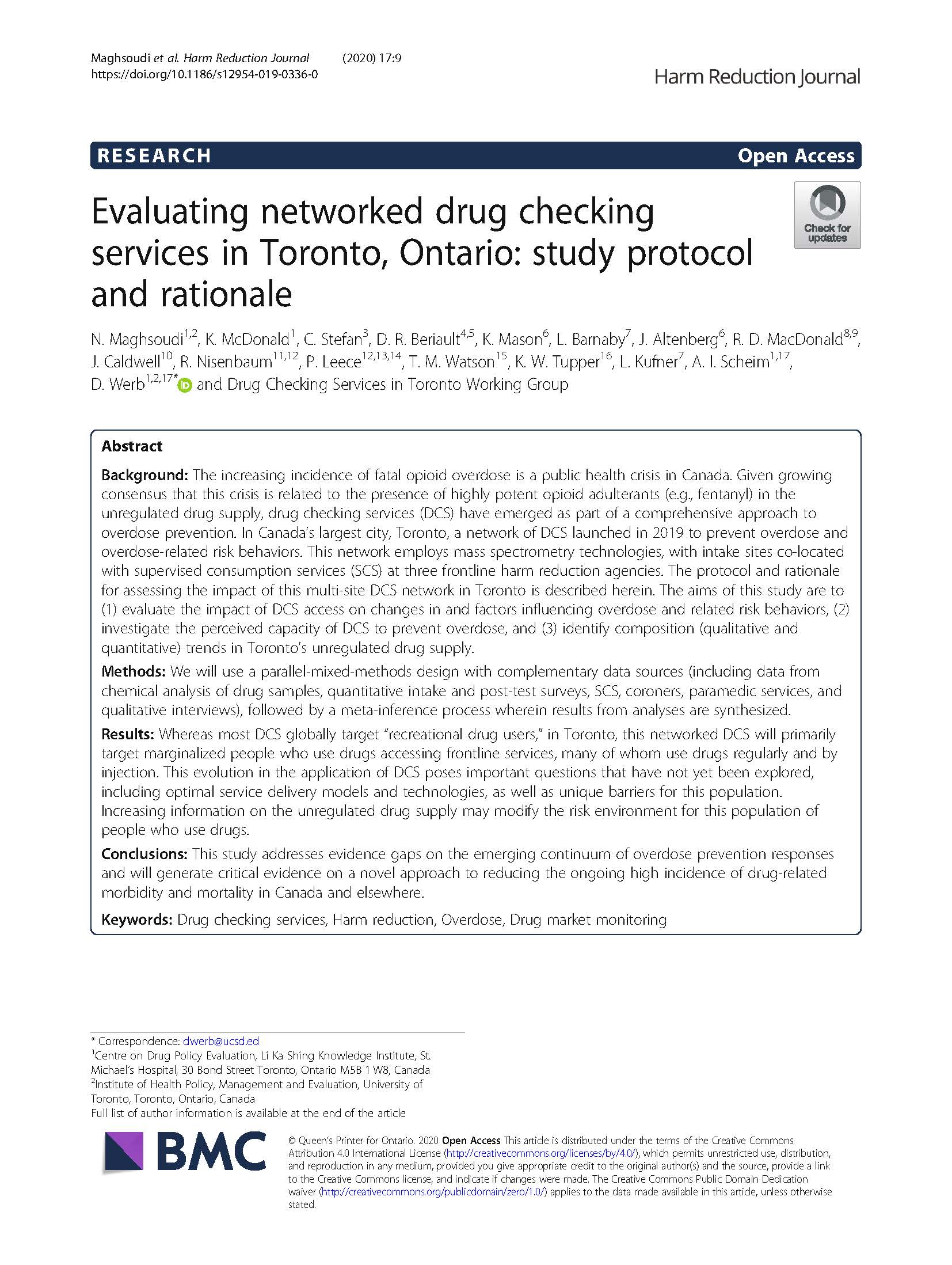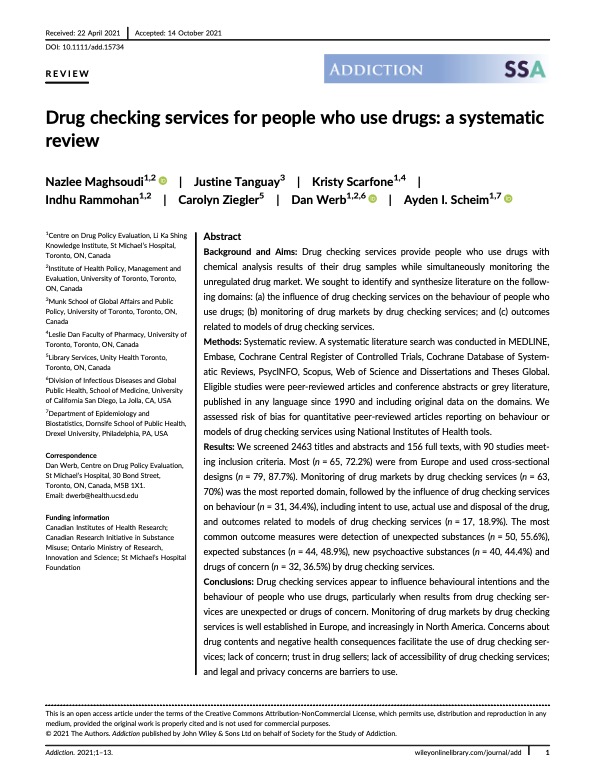Drug checking use and interest among people who inject drugs in Toronto, Canada
Abstract
Background: Drug checking services (DCS) provide information on drug composition to inform consumption practices and monitor unregulated drug markets. We sought to identify correlates of recent informal DCS use (e.g., fentanyl test strips) and willingness to use a formal DCS (co-located within a supervised consumption site and employing laboratory-based analyses) in Toronto, Canada prior to its implementation.
Methods: We calculated outcome prevalence based on baseline questionnaire data from a cohort of people who inject drugs in downtown Toronto between November 2018–October 2019 and conducted multivariable Poisson regression analyses. Outcomes included recent (i.e., past six-month) informal DCS use and willingness to use a formal DCS, if implemented. We also conducted a sub-analysis assessing willingness to use a formal DCS following an unexpected drug reaction.
Results: Among 604 participants, 12% (n=74) reported recent informal DCS use, 73% (n=442) reported willingness to use a formal DCS, and 88% (n=530) reported willingness to use a formal DCS in response to an unexpected drug reaction. Based on 567 participants with complete data, we found that recent injection at a supervised consumption site or overdose prevention site were both associated with recent informal DCS use (respectively, adjusted prevalence ratio [aPR]=2.44, 95% confidence interval [CI]: 1.11–5.35; aPR=1.78, 95% CI: 1.00–3.15). Recent informal DCS use and recent overdose were both associated with willingness to use a formal DCS (respectively, aPR=1.15, 95% CI: 1.02–1.30; aPR=1.10, 95% CI: 1.00–1.22).
Conclusion: Although recent informal DCS use was infrequently reported in our study, willingness to use a formal DCS was high. Our findings indicate a potential role for laboratory-based DCS in mitigating overdose risk among individuals accessing the unregulated drug supply. However, barriers that impede service access or reduce interest should be addressed to ensure equitable use among those at heightened risk of overdose.
View the full article here.


